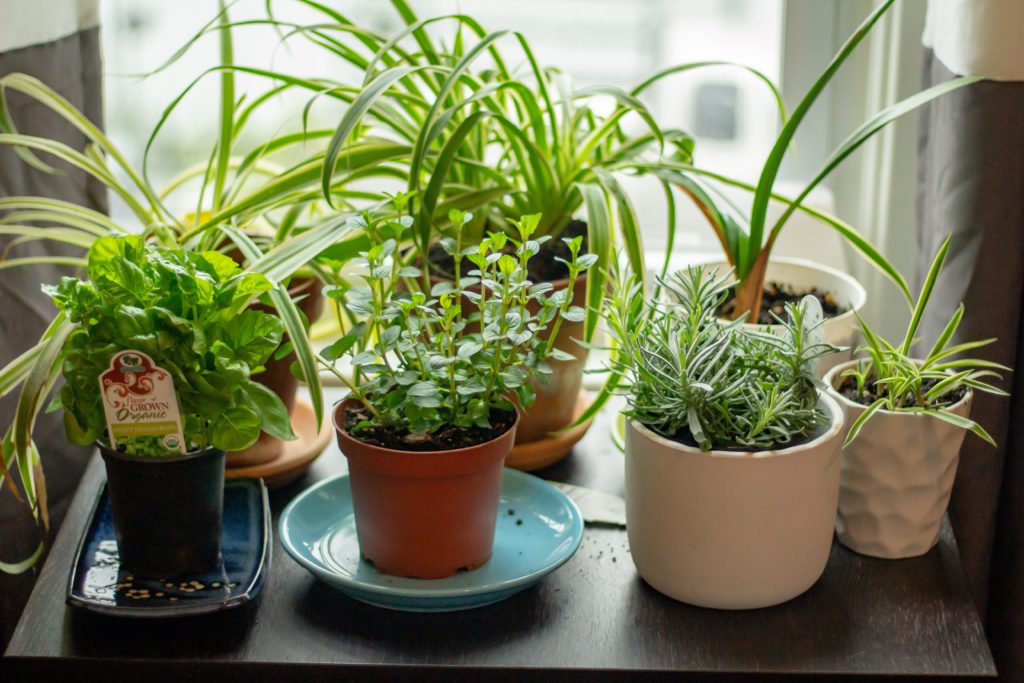Let’s start with the basics. What is an herb? When we talk about herbs, we’re referencing the leafy parts of a plant that can be used fresh or dried. When considering what to do with an herb, the opportunities are endless!

Herbs and Wellness
Herbs have been used in Indigenous communities for thousands of years. Despite the long history of effective use, medicinal herb practices for physical and mental health have been challenged due to lack of scientific evidence in the context of contemporary medicine. Regardless of western medicine’s perspective, many people choose to use herbal remedies as an accessible alternative to an expensive health care system.
How to Grow
You don’t need a fancy garden to plant herbs. You don’t even need a yard! Herbs require soil, light, water, and a container; doorsteps, patios, and windowsills work just fine. Some folks prefer to grow herbs in their kitchens for easily accessible ingredients. A few kitchen favorites are basil, cilantro, parsley, and mint.
If you’re planting in a garden, try planting your herbs in succession about every 2-3 weeks. That way, you’ll have fresh herbs early summer into the fall (climate permitting). Michigan State University Extension offers additional growing information to ensure your herbs thrive.
Annuals vs. Perennials
Annual herbs, like cilantro and basil, must be planted and harvested each year. Perennial herbs, like lavender and rosemary, do not require yearly planting. Over the years, they can become large, unruly bushes with woody stems. However, the plant will produce an abundance of fresh foliage each year if you prune them annually.
Dried vs. Fresh Storage
When harvesting your herbs, decide how long you’d like them to keep. If you’re hoping to cook them within the week, store your herbs stem down in a glass of water to maintain freshness. Just make sure to change out the water if it becomes cloudy to avoid slimy stems. Another option is to wet a paper towel, gently wrap the herbs and place in a plastic container in the fridge. This is an especially good option for woodier fresh herbs. However, you should never put fresh basil in the fridge because it will turn black and no longer be usable.
If you’re looking to use your herbs at a later date, you have the option to dry them. Dried herbs can keep in a cool, dark and dry place for up to 6 months, and when sealed in a container, even longer (although freshness can wane). If you want to dry herbs, there are a few tried and true methods. You might place them in a paper bag and leave them there for a couple months or you can bunch and hang them! You can also infuse them in oil.
Cooking with Herbs
Herbs are great to use fresh in cold dishes like pico de gallo or pesto, baked into breads or steeped. They’re perfect for toppings, garnishes, and creative herb salts. Fresh herbs take longer to draw out the flavor when whole but when chopped, the cells of the leaves are broken, releasing their signature aromas. Dried herbs, however, pack a punch from the start and are more likely to be used to complement a dish instead of being featured as a raw ingredient or garnish.
Herbs are eye (and nose!) catching, delicious, and extremely versatile with numerous varieties to choose from.
Find local herbs in our web directory!
Emily Row is the Content Creator at Taste the Local Difference.
Find more great stories at www.localdifference.org/blog/
